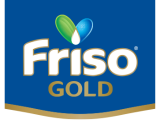Easy to digest formula is important when dealing with the delicate digestive systems of young children. Their stomach and intestines are still developing, making them sensitive to what they consume. Formulas, whether they are cow's milk-based, soy-based, or hydrolysed, play a pivotal role in their nourishment.
Lactose, a sugar found in milk, can sometimes be a challenge for little ones to digest. As a result, manufacturers often formulate lactose-free options, aided by enzymes like lactase, which help break down lactose. Proteins, such as whey and casein, are vital for growth, but they too, can be tough on a young child’s digestive system. This is where hydrolysed formulas come into play. With these formulas, proteins are broken down, making them easier to digest and absorb.
The role of fats like MCTs (medium-chain triglycerides) are equally crucial. They provide essential calories, and their easier absorption can soothe a child's digestive system. Additionally, probiotics, often added to formulas, support healthy gut flora, further aiding in digestion.
However, it's not just about what's added to the formula; it's also about what's excluded. Allergens like soy and gluten can trigger adverse reactions in young children. Caregivers, including parents and pediatricians, need to be vigilant and compare different formulas to evaluate which one their child can best tolerate. The need for hypoallergenic, organic, non-GMO, and lactose-free options underlines the importance of choice and variety in the market.
Manufacturers, driven by research and feedback, may occasionally introduce new formulations, targeting specific digestive needs. Additionally, packaging, in cans or bottles, should also be carefully designed to optimise the formula's freshness and integrity.
Ultimately, the goal of any formula is to nourish a child, while reducing any symptoms or discomfort related to digestion. As caregivers research, choose, and purchase these formulas, they rely heavily on pediatricians to recommend the most suitable options. It's a collective effort to ensure that children thrive, while avoiding any adverse reactions.



